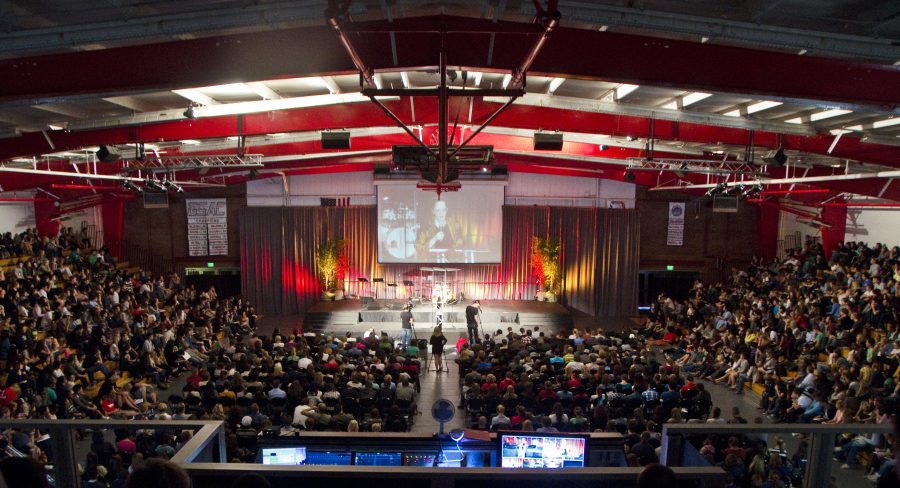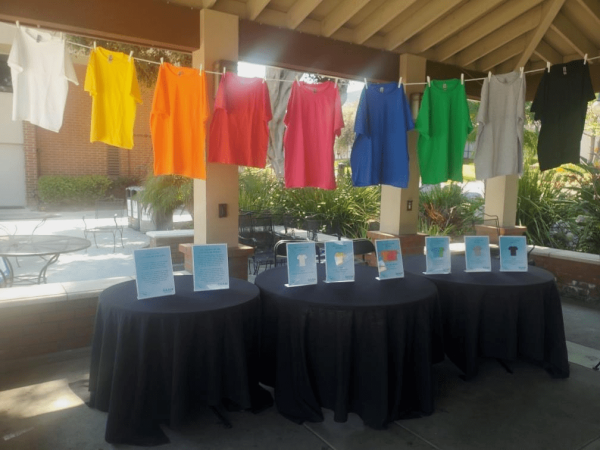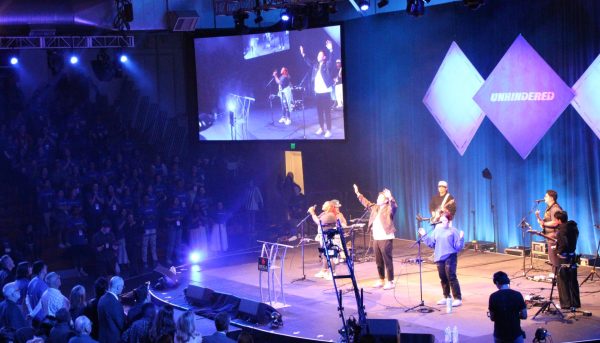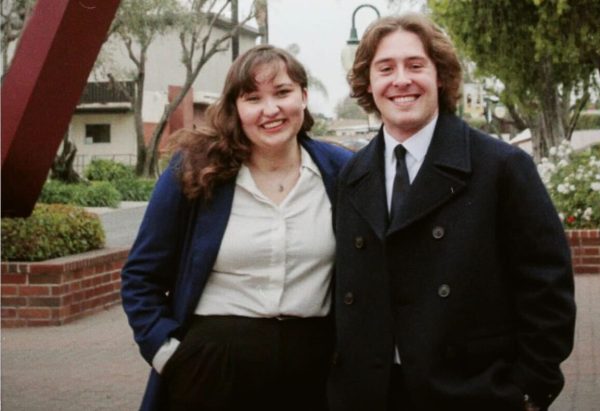Alternative ways to Sabbath
Torrey Conference encourages students to implement what they learn during the conference in their everyday lives.
October 20, 2011

Plenty of students showed up for the evening session to hear Dr. Talley speak on Israel and the Old Testament sabbathing, closing day one of Torrey Conference 2011. | Ashley Jones/THE CHIMES
The 76th annual Torrey Conference is offering alternative sabbathing activities, including bocce ball and Frisbee, while it trains students to learn how to engage with God.
“Sabbath can look different for different people. Some of it might be play. Some of it might be going to the beach. It can look like a lot of different things,” said director of Chapel Programs Lisa Ishihara.
Fasting from technology
Another new prayer project this year is a technology fast occurring from 1:30 p.m. – 5:30 p.m. on both Wednesday and Thursday.
“When we’re so connected to our phones, our iPads, our computers, it takes up a lot of space. The hope is that ceasing from those things for a short time period, will give some space for the Spirit to work and move,” Ishihara said.
Creating a sacred space
Chapel coordinator Kevin Zimmerman is adamant about the opportunity to truly experience the diversity of Sabbath.
“We want students to engage [Sabbath] in ways that God has designed them to,” he said. “Whether they’re traditional or nontraditional, they’re still all things that can glorify God.”
Torrey Conference’s theme of Sabbath coincides with this year’s chapel theme, Sacred Spaces.
“We are trying to create space, not just for people to spend time with God, but to know how to do that,” said Todd Pickett, dean of Spiritual Development. “The irony is that at a time when you really need to be sitting back and reflecting on the big questions and trusting God more, you have less time to do that. And Sabbath time becomes rarer at the very time it needs to become more.”
Though the ways students can engage the conference have changed from previous conferences, Pickett feels this year has more similarity to previous years than it has differences.
“What stands out to me is not necessarily difference — it’s continuity,” Pickett said. “We have been building into Torrey for the past few years these soul or prayer projects where students actually get conference credit for spending an hour praying through the talk. It’s something we’re continuing.”
Learning to find rest in the Sabbath
This year’s conference is titled The Sabbath Soul. Approximately 2,600 to 3,000 students attend the conference, most of whom are expected to fill Chase Gymnasium. In addition, two overflows will be set up in Sutherland and Crowell auditoriums. The conference has been in the works for over six months and is paid for by Biola’s chapel budget.
On Wednesday, Lauren Winner of Duke Divinity School spoke, followed by Dave Talley of Talbot School of Theology. On Thursday, Talley will return with Sandy Richter of Wesley Biblical Seminary. Friday will feature Don Sunukjian of Talbot School of Theology, in a session worth two conference credits.
While students need to attend enough sessions to fulfill eight conference credits, there will be alternate ways to meet that requirement.
“Because we’re talking about Sabbath this year we want students to have the ability to practice that on campus,” Zimmerman said. “You don’t really learn unless you live it out.”
It’s an opportune moment in the semester for students to implement restful patterns in their lives, Pickett is optimistic about the chance for lifelong change in students’ lives.
“My hope for Torrey Conference is that students will really discipline themselves to take some time and not only take in the instruction, but have some good conversations with God about their lives, their callings, their relationship with him and just their enjoyment with him,” Pickett said. “But in the end, that’s up to the individual student.”







